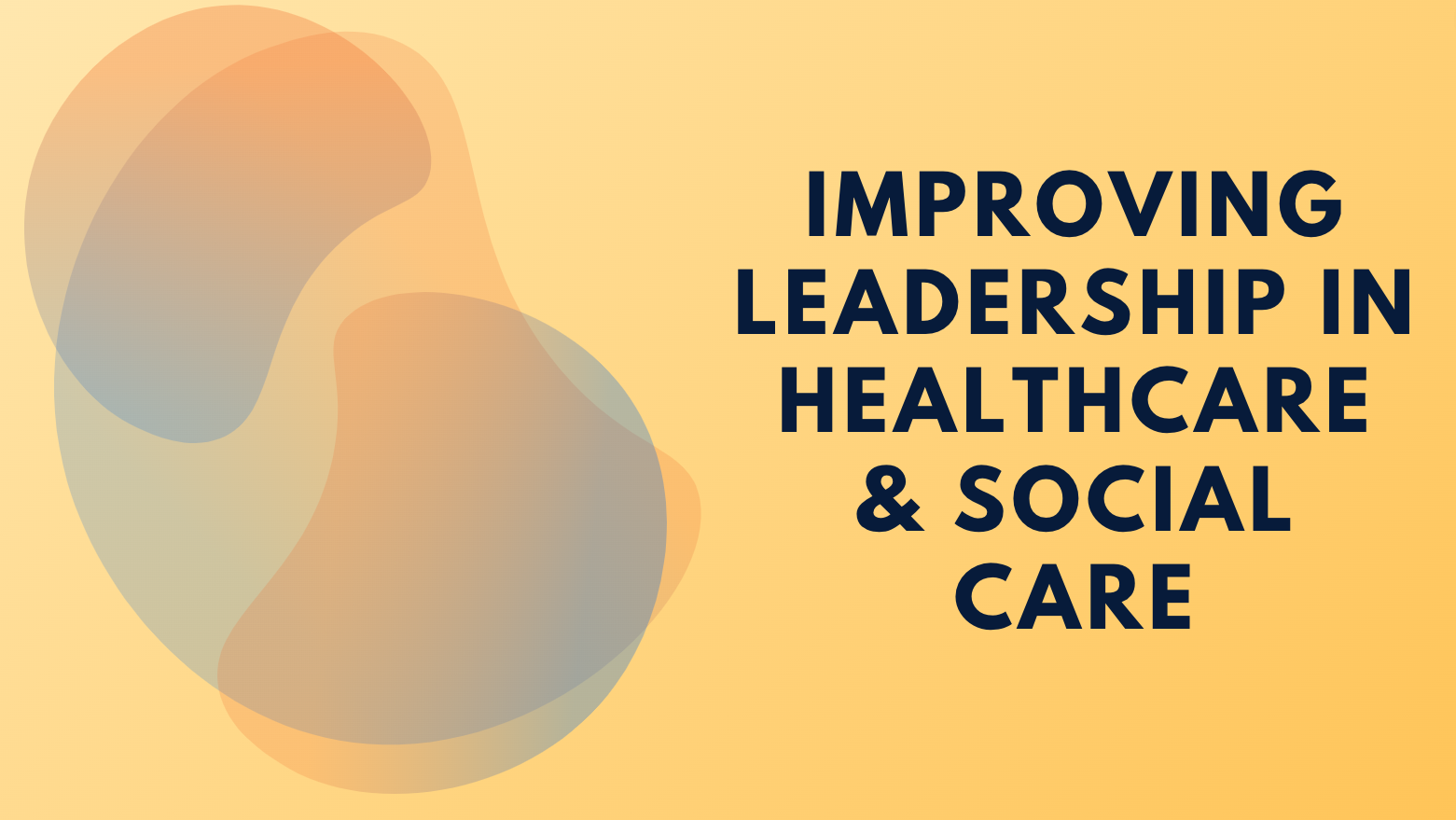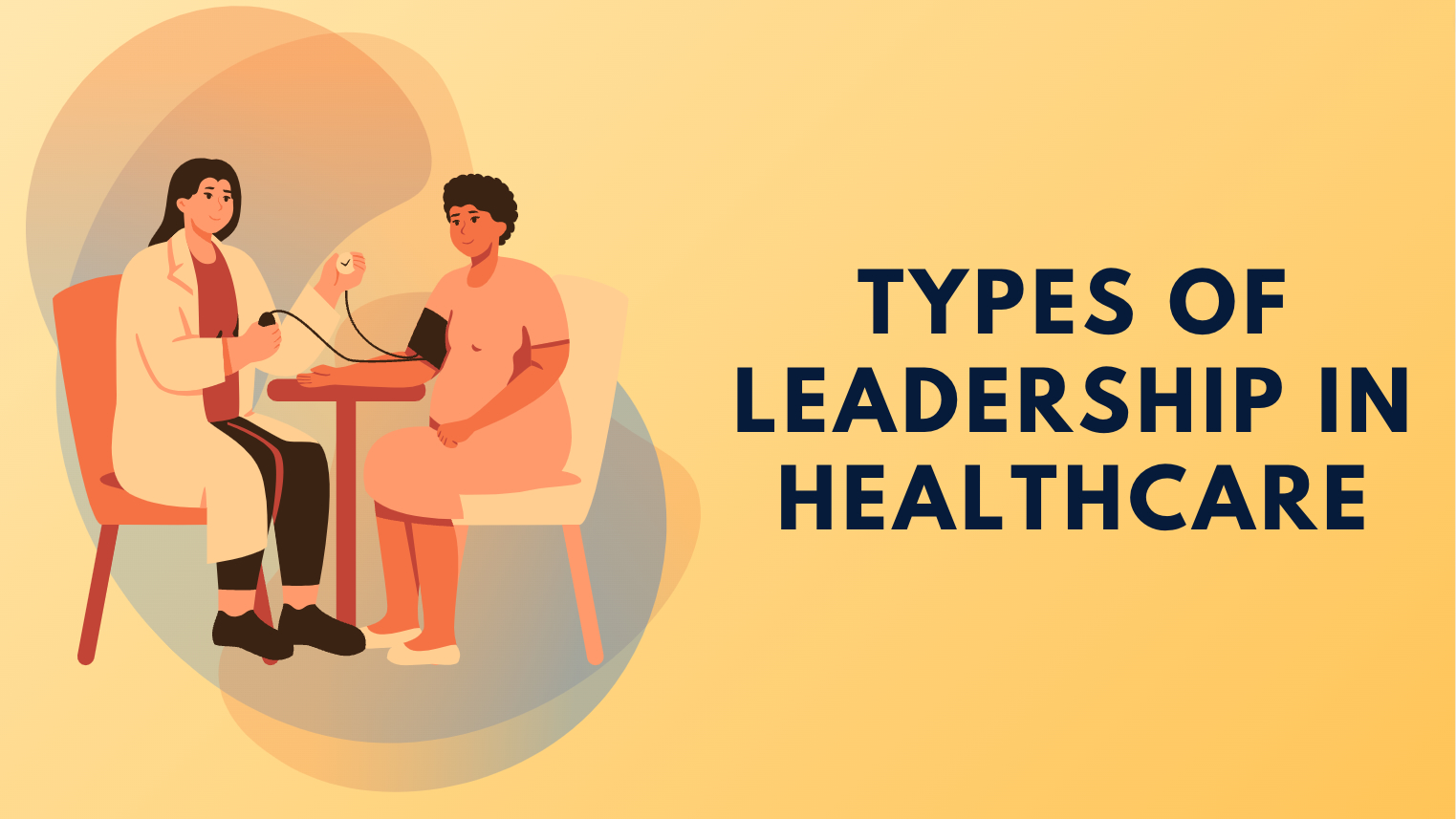Which Leadership Style Makes You a Good Leader in Health Care? Guide| Everything You Need to Know
 Examining Excellence: A Guide to Improving Leadership in Healthcare & Social Care
Examining Excellence: A Guide to Improving Leadership in Healthcare & Social Care
Embarking on a journey to elevate leadership in healthcare and social care is not just a professional aspiration; it’s a commitment to the well-being of individuals and communities. In the dynamic world of healthcare, where every decision counts and every interaction matters, the impact of effective leadership reverberates far and wide.
Our guide is not just a manual; it’s a compass for those looking to steer their leadership style toward excellence. Whether you’re a seasoned healthcare leader or just starting your journey, this guide is your trusted companion, offering insights, strategies, and a friendly nudge in the right direction.
Join us as we explore the keys to becoming a transformational leader, fostering collaboration, and cultivating a positive environment that resonates with both your team and those under your care.
It’s not just about management; it’s about inspiring, motivating, and creating a ripple effect of positive change.
Ready to unlock the secrets of effective leadership? Let’s dive in and embark on a transformative quest to enhance leadership in healthcare and social care. Your journey to excellence starts now.
Eager to embark on the journey ahead? We’ve condensed a concise overview just for you. Prepare to delve into the complexities of enhancing leadership in healthcare & social care, knowing that we’re here to navigate you through this enlightening expedition.
Quick Summary
Leading with Compassion: A Deep Dive into Nursing Leadership Approaches
Leadership is crucial in healthcare due to the complex nature of healthcare facilities with multiple operational components. Effective leadership is essential at all levels of healthcare organizations, including emergency room operations, ICU, elective surgery, maternity and children’s care, budgeting, administrative tasks, change management, quality improvement, building maintenance, nursing departments, and physician/internship programs. The right leadership ensures organization, clarity, and a shared purpose among staff.
In healthcare, people are the core asset, and proper leadership is vital for staff management. Well-managed staff can significantly impact the success or failure of a healthcare facility. Becker’s Hospital CFO Report highlights that over 50% of a hospital’s operating revenue is allocated to staff labor, emphasizing the substantial investment in personnel. Without effective health leadership and management, negative outcomes such as high staff turnover, dissatisfied patients seeking alternative options, and a shortage of qualified healthcare leaders can occur, ultimately affecting the organization’s financial performance.
Prescriptions for Success: Tackling Leadership Challenges in Healthcare
Leadership challenges in healthcare include:
- Budget Constraints:
- Tightening budgets, exacerbated by the impact of the COVID-19 pandemic, pose a significant challenge.
- Leaders may struggle to motivate their teams when faced with the need to achieve more with fewer resources, older technology, or reduced promotions and bonuses.
- Emerging Technologies & Change:
- Advances in drug therapies, robotics, and 3D printing necessitate organizational changes, but resistance to change is common.
- Changing regulations, such as those related to the Affordable Care Act (ACA) and HIPAA, require effective leadership in healthcare to manage and communicate changes.
- Workforce Shortages:
- Difficulty in acquiring and retaining a quality workforce challenges leadership competencies.
- Leading an overworked team with the wrong leadership styles can result in decreased morale, leading to staff quitting.
- Training & Education of Staff:
- Leadership in healthcare should involve mentoring, training, and staff development.
- Time and resource constraints may hinder individualized development, leading to on-the-job training situations that can result in costly mistakes.
Addressing these challenges requires effective leadership and healthcare management skills, including the ability to navigate budget limitations, manage technological advancements, overcome workforce shortages, and prioritize staff training and education despite resource constraints.

Decoding the DNA of Leadership: Exploring Diverse Types in Healthcare
In healthcare, various leadership styles, both intentional and personality-driven, play a significant role. Effective leaders in healthcare organizations analyze the attributes of good leadership and adopt styles with positive qualities. The importance of leadership in healthcare emphasizes the need for self-awareness and adaptability in managing staff for greater effectiveness.
Six leadership styles in healthcare management are highlighted:
- Democratic Leadership:
- Involves decision-making through group consensus.
- Pros include fostering teamwork and collaboration.
- Cons may include slower decision-making.
- Transactional Leadership:
- Focuses on clear roles, tasks, and rewards for performance.
- Pros involve structure and clarity.
- Cons may include limited innovation and flexibility.
- Collaborative Leadership:
- Emphasizes open collaboration and communication.
- Pros include improved teamwork and adaptability.
- Cons may involve challenges in decision-making efficiency.
- Autocratic Leadership:
- Involves centralized decision-making by a single authority.
- Pros include quick decision-making.
- Cons may include reduced employee morale and creativity.
- Shared Leadership:
- Distributes leadership responsibilities among team members.
- Pros include shared accountability and diverse perspectives.
- Cons may involve potential confusion among staff.
- Transformational Leadership:
- Focuses on inspiring and motivating teams toward a shared vision.
- Pros include innovation, employee development, and adaptability.
- Cons may involve challenges in implementation and potential burnout.
Leadership competencies in healthcare are often linked to the chosen leadership style. While certain styles may be considered superior, each has its advantages that leaders can leverage.
Beyond the Charts: Examining the Real-world Impact of Poor Leadership in Healthcare
Poor leadership in healthcare can have detrimental effects on organizational efficiency, staff satisfaction, and patient care. Leadership strategies play a crucial role in maintaining the smooth operation of healthcare facilities. Issues arising from poor leadership and management in healthcare include cost overruns, employee dissatisfaction, and an increased likelihood of mistakes, ultimately impacting patient care and satisfaction negatively.
Effects of Poor Leadership:
- Increased Costs: Poor leadership can lead to financial inefficiencies and cost overruns.
- Reduced Efficiency: Ineffective leadership strategies can hinder the efficient operation of healthcare organizations.
- High Staff Turnover Rates: Leadership problems may contribute to dissatisfaction among staff, resulting in high turnover.
- Low Morale: Poor leadership qualities can lead to low morale among healthcare staff.
- Lower Patient Satisfaction: Leadership issues can negatively impact the quality of patient care and overall satisfaction.
- Worse Quality of Care: Lack of effective leadership may contribute to errors and lower standards of care.
- Chronic Stress and Burnout: Poor leadership can contribute to stress and burnout among healthcare professionals.
- Lack of Newly Trained Leaders: Inability to cultivate effective leadership may result in a shortage of qualified leaders in the healthcare industry.
- Inability to Evolve and Change: Poor leadership can impede organizational adaptability and hinder successful change initiatives.
Leadership Problems in Healthcare:
- Expecting too much from individuals.
- Lack of adequate leadership training.
- Lack of self-awareness regarding leadership style.
- Challenges to authority overwhelming leaders.
- Uncertainty about the definition and expectations of leadership in healthcare.
- Poor fit for the leadership role, lacking necessary competencies.

The Pillars of Success: Examining the Flourishing Results of Good Leadership in Healthcare
Effective leadership and management in healthcare yield numerous benefits for both organizations and patients. Studies, particularly focusing on transformational leadership, demonstrate positive outcomes, such as reduced nurse turnover rates. Transformational leadership, compared to other styles, led to a 16% lower nurse turnover.
Effects of Good Leadership in Healthcare:
- Reduced Nurse Turnover: Transformational leadership reduced nurse turnover rates by 16%.
- Improved Patient Satisfaction: Positive team leadership in health and social care contributes to enhanced patient satisfaction.
- Enhanced Patient Care Quality: Good leadership positively impacts the quality of patient care.
- Increased Efficiency: Organizations run more efficiently with effective leadership.
- Fostering Team Spirit: Good leadership builds a shared mission and team spirit among staff.
- Continuous Improvement: Leadership development ensures ongoing improvement and efficiency.
- Productivity Improvements: Reduced costs through productivity improvements.
- Compliance with Regulations: Effective leadership ensures compliance with health regulations like HIPAA.
- Conflict Reduction: Reduces the risk of personality conflicts that interfere with work.
- Employee Satisfaction: Employees feel valued, leading to improved job satisfaction.
Attributes of a Good Leader in Healthcare:
- Empathetic
- Humble (not having a big ego)
- Collaborative and team-oriented
- Strong problem-solving skills
- Visionary and inspirational
- Sets a positive example
- Invests time in developing individuals into leaders
- Motivates with positive influence
- Encourages and uplifts team members
- Passionate about the work
- Understands effective leadership styles in healthcare management
- Self-aware and committed to personal growth
- Capable of making tough decisions
- Prioritizes excellent patient care as a primary motivator.
Detailed Deep Dive
Leadership in health services is important on multiple levels. Leadership in health and social care can impact patient quality of care, employee turnover rate, and how well an organization adapts to changes in the industry.
The difference between leadership and management in healthcare is that management is more about the bureaucracy and keeping the engine of an organization running.
Leadership in healthcare is about being able to lead, motivate, and manage the people that are an integral part of that engine.
There are several different leadership styles in healthcare management that nurses, physicians, and administrators can adopt. The most effective leadership styles in healthcare will include qualities that keep employees motivated, on task, and feeling as if they’re an integral part of a team.
What is leadership in healthcare’s biggest impact? Bad leaders can lead to poor patient outcomes and high staff turnover. Good leadership strategies in healthcare can reduce costs at the same time as improving organizational efficiency.

Leadership Skills in Healthcare Management
Leaders are important to any organization, no matter the industry. But leadership and management in health and social care facilities are especially vital due to the direct impact it has on patient outcomes.
What You’ll Learn
In this article, we’ll look at the importance of leadership in healthcare organizations and answer several important questions, including:
- What are the most important leadership skills in healthcare?
- What are the leadership challenges in healthcare?
- What makes a good leader in healthcare?
- What are the different leadership roles in healthcare?
- What is the change healthcare leadership?
- What are the different types of leadership styles in healthcare administration?
- What are the best leadership styles in healthcare management?
This OCM Solution guide should give you an idea of the role of team leader in health and social care and which leadership styles in healthcare management have the most positive impacts on teams and organizations.
See Also: Applying Best Change Management in Healthcare | All You Need to Know
Do you have questions on the different leadership styles in healthcare management found in this article, send us a message as we’d love to hear from you.
Why is Leadership Important in Healthcare?
Healthcare facilities have multiple moving parts, and without qualified leadership and management in healthcare organizations, things could easily fall apart.
Effective leadership in healthcare is important throughout all levels of an organization, including:
- Emergency room operations
- ICU and urgent care
- Elective surgery departments
- Maternity and children’s care
- Budgeting and administrative
- Ongoing change management and quality improvement
- Building maintenance and operations
- Nursing departments
- Physician and internship programs
- And more
People are the heart of an organization and the right leadership qualities in healthcare can ensure people are well organized, know what to do, and work together with a common purpose and mission. Leadership in health care management is needed to take care of one of the most significant assets of any healthcare organization – its staff. A well-managed staff can either lift a hospital or healthcare facility or they can sink it.
According to Becker’s Hospital CFO Report, more than 50% of a hospital’s operating revenue goes to staff labor. That’s a big investment, and if those people don’t have good health leadership and management, it can really show in an organization’s bottom line.
Things like high staff turnover rates, patients that aren’t happy and go elsewhere, and a shortage of new leaders in healthcare industry positions can all be a result of poor leadership and leadership development in health care.
Leadership Challenges in Healthcare
What are some of the leadership challenges in healthcare faced by leaders?
Budget Constraints
Tightening budgets, especially due to the drop in elective procedures during the coronavirus pandemic, can challenge the definition of leadership in healthcare management.
Having to tell their staff they have to do more with less, use older technology, or that there’s a cut in promotions or bonuses, can make it difficult for a leader to keep a team motivated.
Emerging Technologies & Change
Advances in new drug therapies and treatments, as well as tech advances like robotics and 3D printing, all require organizations to change to keep up. But change isn’t always easy, and it’s natural for people to resist it.
Another area of change that can be challenging, even to those that have all the attributes of a good leader in healthcare, are changing regulations and rules, such as those dealing with the Affordable Care Act (ACA), HIPAA, or other industry standards.
Leadership development in healthcare often requires knowing how to use change management strategies to help staff understand and support a new change in the way things are done.
Workforce Shortages
Not being able to get or retain a quality workforce is another thing that can challenge leadership competencies in healthcare. Keeping a team that is spread thin motivated is not easy and it requires the right type of skills in leadership and healthcare to keep morale from dropping.
Having an overworked team led by the wrong type of leadership styles in healthcare administration can result in people feeling fed up, unsupported, and quitting the organization to go elsewhere.
Training & Education of Staff
Part of leadership for healthcare professionals needs to include mentoring, training, and staff development. Unfortunately, there is not always the time or resources to ensure every individual receives the development they need.
Leadership in healthcare organizations is vital to ensuring the education of the staff on policies, procedures, and ongoing change initiatives. But it can be hard to fit this in with everything else, and often people are thrown into an “on the job” training environment, which can lead to costly mistakes.
Don’t Miss: The Best Practices for Changing Organizational Culture in Healthcare
Got questions like “What are examples of poor leadership in healthcare?” or “what is the best leadership style in healthcare?”. Drop us a message and let us know.
What is Distributed Leadership in Healthcare?
Before we get into the different leadership styles in healthcare, let’s take a look at distributed leadership in healthcare and the various leadership roles in healthcare and social care facilities.
Distributed leadership in healthcare is not a style of leadership, but rather a process of managing the healthcare leadership model. It understands that one leader in healthcare may be better at managing a specific area than others.
For example, someone with a style of transactional leadership in healthcare management, which is more of a micro-managing style, may be best for newer staff and in emergency room situations.
Where someone with transformational leadership in healthcare management would be better suited for mentoring staff and driving forward change in an organization.
Distributed leadership in healthcare distributes various leadership duties across different leaders in the same department or area, which can somewhat change the role of team leader in health and social care. It’s also known as forming a “constellation” of leadership in health services.
Pros are that leadership and management in healthcare are shared across multiple leaders, so no one is bearing too much burden. Distributed leadership in healthcare can also put the most effective leadership styles in healthcare in the right role.
Cons are that this type of leadership in health services can be confusing to the staff if one leader says one thing, and another says the opposite. It can also keep leaders from developing their leadership qualities in healthcare because they’re only sticking to the areas that they’re good at.
Leadership Roles in Healthcare
The answer to “What is leadership in healthcare” can vary according to different leadership roles in healthcare. Some organizations will have various leadership strategies in healthcare throughout their facility.
Some of the different leadership roles in healthcare can include:
- Population health leader
- Patient safety leader
- Patient experience leader
- Change management leader
- Compliance officer
Innovation & quality improvement leader - Staffing & scheduling leader
- Staff education and training leader
- Department leader
These different roles in leadership and management in healthcare organizations may have differing main job objectives, but each needs to have the same core leadership skills in healthcare.
Change Healthcare Leadership
Change healthcare leadership is really its own specific role that can be a position overseeing change management for a facility. It can also be part of the general skills of leaders in healthcare industry positions throughout the organization.
The reason change healthcare leadership skills are so important is because of the continuous change and transitions happening in the healthcare industry.
Change happens due to:
- Updates in the hospital or regulatory policies
- Patient behavior changes (e.g., due to the pandemic)
- New drugs and therapies being developed
- Budget cuts and the need to optimize
- Mergers/acquisitions
- Updates to the technology used in healthcare facilities
Any change involves putting together a detailed change management roadmap, which includes activities like a readiness assessment, change impact assessment, change training plan, and much more.
As we get into the styles definition of leadership in healthcare, you’ll see that one style in particular – transformational leadership in healthcare – is particularly well suited to managing and driving a change forward successfully.
Next, we’re going to review the effective leadership styles in healthcare and their advantages and disadvantages.
Overview | Types of Leadership in Healthcare
Multiple leadership styles impact leadership in health and social care. Some of these types of leadership in healthcare are not adopted intentionally and are coming from the personality of the leader.
Those that want to provide effective leadership and management in health care organizations will study the attributes of a good leader in healthcare and which styles have positive qualities. They’ll then adjust their own style to integrate the best qualities as part of their own leadership development in healthcare.

Healthcare Leadership Model Examples
The importance of leadership in healthcare organizations means that collaborative leadership in healthcare should be open to being self-aware and changing how they manage their staff to become more effective.
We’ve already looked at the answer to, “Why is leadership important in healthcare?” so now we’ll look at the following six leadership styles in healthcare and go over what they are as well as their pros and cons.
Types of leadership styles in healthcare:
- Democratic leadership in healthcare
- Transactional leadership in healthcare
- Collaborative leadership in healthcare
- Autocratic leadership in healthcare
- Shared leadership in healthcare
- Transformational leadership in healthcare
Leadership competencies in healthcare are often tied directly to the style of leadership being used. Effective leadership in healthcare may incorporate some positive traits of one style into another.
When studying leadership for healthcare professionals, you’ll see that certain leadership styles in healthcare administration are seen as superior to others. But each one still does have certain advantages you can tap into.
We’ll go through the advantages and disadvantages of these health leadership and management styles next.
Related: Resolving Barriers to Change in Healthcare & Physicians
Are you looking answers to questions like “What are the effects of poor leadership in healthcare” or “What are the main types of leadership styles in healthcare?”. Send us a message with your questions or comments.
What is Democratic Leadership in Healthcare?
Democratic leadership in healthcare is when the leader treats decisions as a “group think” opportunity. They see all members of the group as equals and thus will put decisions through a democratic process of discussion and majority vote.
This style encourages leadership skills in healthcare management that consider all points of view. Team members are invited to give input and feel as if their opinion is valued. Staff members also feel as if they have a say in their working environment.
Advantages of Democratic Leadership in Healthcare:
- Staff feel their opinion is valued
- It encourages the development of problem-solving skills
- It promotes a sense of team
- Better solutions can be found due to being based on more points of view
Disadvantages of Democratic Leadership in Healthcare:
- It can take too long for decisions to be made
- Stronger voices can drown out less forceful personality types
- It can lead to a lack of accountability (“it was everyone’s decision”)
- It’s less effective with less experienced staff members
What is Transactional Leadership in Healthcare?
Transactional leadership in healthcare is based on a system of punishment and reward. If an employee makes a mistake, they receive a reprimand or other punishment. If they follow directions to help achieve a positive end goal, then they may receive some type of reward.
Leadership in healthcare organizations using the transactional style may have a higher turnover rate than other styles. This style is more goal than individual-oriented, meaning staff might not feel valued and may not be asked to give their opinion or input on decisions.
Advantages of Transactional Leadership in Healthcare:
- Can help problem employees perform better due to more oversight
- Effective in emergencies
- Encourages employees to follow the rules to the letter or face punishment
Disadvantages of Transactional Leadership in Healthcare:
- Doesn’t provide for individual growth or development
- Can cause staff to dislike the leader
- Lack of input from others may cause departments to get in a rut
- Can cause a high staff turnover rate
What is Collaborative Leadership in Healthcare?
Collaborative leadership in healthcare is very similar to the democratic leadership style. The leader invites a collaborative environment where everyone feels welcome to contribute and give their input on decisions.
Both leadership and leadership development in health care benefit from staff feeling as if they are working towards a common goal as part of a team, and this is one of the traits of this style of leadership. They promote a common cause and enjoy collaborating with others themselves to help improve organizations.
Advantages of Collaborative Leadership in Healthcare:
- Staff feel their opinion is valued
- Encourages a feeling of team spirit
- Can encourage innovation and problem-solving
- Leaders still have the final say, so it’s not as slow a decision-making process as the democratic leadership style in healthcare
Disadvantages of Collaborative Leadership in Healthcare:
- Some team members may feel left out of the collaborative process
- There can be some conflicts within the team
- It could usurp the leader’s position if the group doesn’t respect them
What is Autocratic Leadership in Healthcare?
Autocratic leadership in healthcare is an authoritarian style. The staff has little or no input on the decision-making process, and they’re often micromanaged. In leadership and healthcare organizations, this is a very rigid style with tight controls on employees.
Employees often feel as if they’re not valued and are just expected to follow orders when working under an autocratic leader. The effects of poor leadership in healthcare are often seen as results of this leadership style.
Advantages of Autocratic Leadership in Healthcare:
- Works well where fast decision-making is needed
- Offers a clear chain of command and structure for employees
- May be best for new recruits or interns
Disadvantages of Autocratic Leadership in Healthcare:
- Leads to resentment and low morale
- Causes high staff turnover rates
- Doesn’t nurture or build staff into leaders
- Can lead to tunnel vision because there is no input on decisions from others
Are you looking for more information on questions like: “What are the best leadership style in healthcare?” or “How do you rank the types of leadership styles in healthcare?” Send a message to our change management team.
What is Shared Leadership in Healthcare?
The shared leadership in the healthcare style is close to democratic and collaborative. Still, in all the types of leadership in healthcare, this one is unique in that the leader gives up leadership duties by distributing them out to the team.
The shared leader believes that what makes a good leader in healthcare is one that delegates leadership duties among the others on their team. This can help give employees on the job leadership training, but it also can lead to problems due to lack of clear direction.
Advantages of Shared Leadership in Healthcare:
- Everyone feels as if they have a voice
- Employees may benefit from the difference between leadership and management in healthcare styles
- Encourages personal development of leadership skills
- Can create a sense of shared responsibility in a team
Disadvantages of Shared Leadership in Healthcare:
- Can cause leadership problems in healthcare due to conflicting agendas/visions
- Leader abdicates a good deal of their responsibility
- Team members can end up all doing things “their way”
- Policies can end up changing as leaders change or swap responsibilities
What is Transformational Leadership in Healthcare?
Transformational leadership in healthcare is a style that includes a charismatic leader that is able to motivate people with a clear vision. Their passion for what they do and the example they set for excellence often causes their team to be very loyal.
This is seen as one of the best leadership styles in healthcare for driving change because they are continually looking to improve processes. They also take the time to mentor and coach individual team members to help them develop their own leadership skills in healthcare.
Advantages of Transformational Leadership in Healthcare:
- Staff feel their opinion is valued
- Staff are motivated by a sense of team and mutual respect
- Employees are mentored and coached
- This style often is connected to high employee morale
Disadvantages of Transformational Leadership in Healthcare:
- Can be disruptive in more rigid organizations
- Staff can feel more loyal to the leader than to the organization
- Potential for abuse due to the admiration the leader builds from their team
What are the Effects of Poor Leadership in Healthcare?
What is leadership in healthcare when it’s not done well? It can reduce organizational efficiency and have other detrimental effects on staff and patients.
Leadership strategies in healthcare have a major impact on facilities because it takes good leadership in health and social care to keep all the moving parts of an organization operating efficiently.
Poor leadership and management in health care can cause cost overruns, employee satisfaction problems, and can lead to dangerous mistakes. All of these can lead to a negative impact on the quality of patient care and patient satisfaction.
The importance of leadership in healthcare organizations means that the types of leadership styles in healthcare that staff use are critically important. If someone uses autocratic leadership in healthcare that causes high staff dissatisfaction, it’s going to have a major impact on the entire facility.
Leadership qualities in healthcare that cause issues or are problematic can mean:
- Increased costs
- Reduced efficiency
- High staff turnover rates
- Low morale
- Lower patient satisfaction
- Worse quality of care
- Chronic stress and burnout
- Lack of newly trained leaders in the healthcare industry
- Inability for an organization to evolve and successfully change

What is Leadership in Healthcare?
Leadership Problems in Healthcare
There are several leadership problems in healthcare that can cause leaders to perform poorly and negatively impact an organization. These can stem from leadership challenges in healthcare that some people can’t overcome or lack understanding, “Why is leadership important in healthcare?”
Here are some common personnel problems that can cause issues with leadership and management in healthcare organizations and that illustrate the effects of poor leadership in healthcare:
- Too much is being expected of a person
- Lack of adequate training for leadership in healthcare management
- No self-awareness of their style as compared to effective leadership in healthcare
- They’re overwhelmed by others challenging their authority
- Unsure of the definition of leadership in healthcare (i.e., don’t know what’s expected)
- They’re not a good fit and don’t have leadership competencies in healthcare
Are you looking for more information on questions like: “How do you evaluate the best leadership styles in healthcare?” or “What are the major types of leadership in healthcare?”. Send a message to our change management team.
What are the Effects of Good Leadership and Management in Healthcare?
When you have good leadership development in healthcare and leaders that motive, support, and inspire their teams, healthcare organizations can benefit in multiple ways as well as their patients.
Many studies have been done on the impact of leadership for healthcare professionals and how different leadership styles can improve staff satisfaction, patient outcomes, efficiency, and more.
In one study about health leadership and management looked at transformational leadership in healthcare as compared to other styles with different leadership skills in healthcare management. The transformational style was found to be superior when it came to retaining staff.
The following nurse turnover rates were seen in the study:
- Transformational leadership: 13% nurse turnover
- Non-transformational leadership: 29% nurse turnover
In comparison to other styles of leadership in healthcare organizations, the transformational leadership style reduced the nurse turnover rate by 16%.
This is just one example of how important leadership and leadership development in health care can be.
There are other effects of good leadership and healthcare as well. Other studies have shown that the positive role of a team leader in health and social care can:
- Improve patient satisfaction
- Improve the quality of patient care
- Help organizations run more efficiently
- Build a shared mission and team spirit among staff
- Ensure new leaders are developed and taught the best leadership styles in healthcare
- Keep organizations continually improving
- Reduce costs through productivity improvements
- Ensure compliance with health regulations like HIPAA
- Reduce the risk of personality conflicts that interfere with work
- Keep employees feeling valued and improve job satisfaction
What Makes a Good Leader in Healthcare?
The difference between leadership and management in healthcare is that leaders have a much more significant impact when it comes to the heart of any organization – its employees.
The attributes of a good leader in healthcare can vary slightly according to the job role, but some of the key agreed-upon best qualities in any healthcare leadership model are:
- Empathetic
- Doesn’t have a big ego
- Gets along well with others
- Is a good problem solver
- Can inspire a team with a vision
- Sets a good example that others can follow
- Takes time to build an individual into a leader in healthcare
- Motivates with positive influence
- Builds people up
- Has a passion for what they do
- Understands the importance of effective leadership styles in healthcare
- Is self-aware and wants to continue to grow
- Does not have trouble making tough decisions
- Keeps excellent patient care as the main motivator in all they do
What is the Best Healthcare Leadership Model?
As we discussed earlier, there are several effective leadership styles in healthcare, each with their strengths and weaknesses. When examining leadership in health services and deciding which healthcare leadership model is best, you have to consider the environment.
Are you leading interns or those with little experience?
In this case, a more autocratic or transactional leader in healthcare may be a good fit, even though they may not be in many other situations.
Are your teams very experienced and don’t need much direction?
Then you may want to consider a democratic or shared healthcare leadership model.
What is leadership in healthcare that is the best fit for most situations and environments?
Many of those studying leadership and management in healthcare point to the transformational leadership style as the best for nearly all situations.
Leadership strategies in healthcare using the transformational style have some of the best employee satisfaction rates because staff feels valued, and they’re not only provided with leadership but also individually mentored to develop their skills.
The transformational healthcare leadership model also builds a desire to strive for continuous improvement through a shared feeling of respect and team commitment to a vision.
Followers of a transformational leader in healthcare genuinely respect and like their leader and follow their direction out of loyalty. This makes the transformational healthcare leadership model the best to drive change because people will be more willing to let go of old ways of doing things and trust in them that the new way will be better.
The best way to approach leadership and management in healthcare is to look at all the effective leadership styles in healthcare and adopt the best qualities of each one.
Are You a Transformational Leader?
Those in leadership in health services can improve their style by adopting certain traits from the transformational healthcare leadership model. They can also check the Four Elements of Transformational Leadership to see if they ring true to the type of leader in healthcare they currently represent.
Are you a transformational leader?
These four elements can help you self-identify whether you are already using the transformational healthcare leadership model.
Idealized Influence
Leaders that set a good example and “walk the walk” influence others in an idealized or positive way. Leadership strategies in healthcare that build mutual respect among a team and inspire them to follow because they WANT to and not because they’re told to all point to being a transformational leader in healthcare.
Inspirational Motivation
Leadership in health services that can create a vision statement for a project that inspires and motivates others is said to be transformational. This type of healthcare leadership model often is charismatic and earns intense loyalty and respect. Their ability to motive makes them excellent drivers for change.
Individualized Consideration
You can often tell transformational leadership and management in healthcare by the leader’s team. They’ll exemplify many qualities of high performing employees because this type of leader takes the time to coach and mentor them and truly values their contributions.
Intellectual Stimulation
The transformational healthcare leadership model is an “outside the box” thinker and invites the same from their team. They are always seeking ways to innovate, and that type of leadership provides intellectual stimulation for their team with an expectation to think beyond the standard way of doing things.
Conclusion: Best Guide for Building Strong Leadership in Healthcare
The role of a team leader in health and social care plays a critical part in the organization’s health and wellbeing. A poor leader in health care facilities can drag an organization down and cause high staff turnover and low patient satisfaction.
Great leadership and management in healthcare can do the opposite and lift an organization up. Good leaders can improve staff morale, champion efficiency improvements, and improve overall patient care and satisfaction.
The healthcare leadership model used can have a significant impact on how effective a healthcare leader is. While transformational leadership in healthcare is seen as one of the most effective styles, others can also include positive leadership qualities in healthcare organizations.
It’s important to understand effective leadership styles in healthcare because they have such a big impact on any organization. Leadership in health services doesn’t have to be set in stone. Anyone can learn and adapt by understanding the impacts of positive healthcare leadership models.
Read More: Best Coaching Toolkit
Note: Content on OCM Solution's ocmsolution.com website is protected by copyright. Should you have any questions or comments regarding this OCM Solution page, please reach out to Ogbe Airiodion (Change Management Lead) or the OCM Solutions Team today. OCM Solution was previously known as Airiodion Global Services (AGS).
Images: https://www.bing.com/images/create, Microsoft 365 Clip Art Image(s) (Bing images licensed under the Creative Commons license system.), https://unsplash.com/photos/hIgeoQjS_iE





